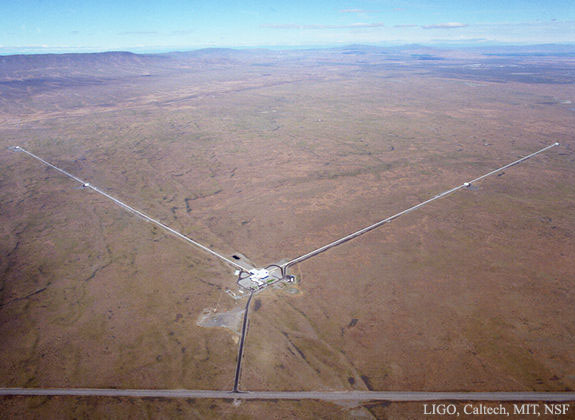
Copyright:
原文:
Accelerate a charge and you’ll get electromagnetic radiation: light. But accelerate any mass and you’ll get gravitational radiation. Light is seen all the time, but, so far, a confirmed direct detection of gravitational radiation has been elusive. When absorbed, gravitational waves create a tiny symmetric jiggle similar to squashing a rubber ball and letting go quickly. Separated detectors can be used to discern gravitational waves from everyday bumps. Powerful astronomical sources of gravitational radiation would coincidentally jiggle even detectors on opposite ends of the Earth. Pictured here are the four-kilometer-long arms of one such detector: the LIGO Hanford Observatory in Washington state, USA. Together with its sister interferometer in Louisiana, these gravitational wave detectors continue to be upgraded and are now more sensitive than ever.
中文翻譯:
加速一個電荷就會產生電磁輻射:光。但加速任何質量則會產生引力輻射。雖然光隨處可見,但至今確認能夠直接檢測到引力波仍然是一項挑戰。當引力波被吸收時,會引起微小的對稱性晃動,就像壓扁一個橡膠球再快速放開一樣。分隔的檢測器可用來區分引力波和日常的震動。來自強大天文源的引力輻射,會巧合地使地球兩端的檢測器同時晃動。這裡顯示的是位於美國華盛頓州的LIGO Hanford Observatory的四公里長的臂。與位於路易斯安那州的姊妹干涉儀一起,這些引力波檢測器持續升級,現已比以往更加敏感。
#引力波 #LIGO #電磁輻射 #天文探索 #科學發現 #香港科技 #物理學 #引力輻射 #科學教育 #宇宙探索
來源:NASA每日圖片


